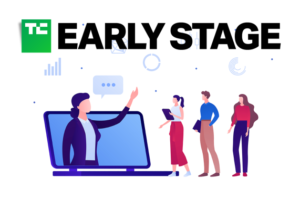If you’re out raising, it’s quite normal for you to peer over the fence and see how far other founders are getting at the same stage. The most obvious attribute for comparison is stage—have they launched, do they have paying customers, etc.
Unfortunately, this is a fundamental misunderstanding of how startups raise.
Fundraising is not a reward for the past. It’s selling a ticket to the future. You don’t earn a round. You sell it.
Therefore, traction is but one aspect of a story that you’re pitching to support how things will go—and how you fit that in is not unlike putting the legs on a stool to get it to stand up.

It probably won’t and can’t be your only leg—unless you’ve got so much traction that it represents a big, solid chonk of a leg, but that’s pretty rare. Even with two legs, it’s going to be hard to balance your stool.
How good of a leg it needs to be is also something that is important to get right.
The types of legs available to you in your fundraising story could be things like:
-
Being a repeat successful founder—and not like, you sold something for an undisclosed amount and got your investors 2X. I’m talking like Jack Dorsey “automatic check” level of founder. If you haven’t made your previous investors back a bunch of cash, then it’s hard to make this a real solid leg. Everyone else is just a “good team” but can’t be a real leg.
-
Being in a space that VCs feel is an extraordinary revenue opportunity, where everywhere you turn there’s money to be made. VCs like markets flush with revenues.
-
Being in a space that is “the future” of something, and so even though we don’t know where the money will be, this is where everything is going (see Web3).
-
Aligning with a particular thesis of that particular VC (this is the one that looks the weirdest to the outside because there’s no other ostensible reason why that team would get funding for that thing—see Betaworks’ early bet on Hugging Face, a cute modern-day Tamagachi-like friend bot, which came out of the fact that Betaworks had run a whole camp on voice applications and so conversational AI was a thesis of theirs).
I’m sure there are other legs I’m just not thinking of a the moment, but many of them you don’t see from the outside, which creates a lot of frustration for founders.
Why is this other person getting funded without the traction that I have?
Well, maybe that’s because traction is the only thing that you have, and not a “single leg stool” level of traction and people have lots of questions about your market or other things.
If you’re trying to figure out whether your story is “enough” for your fundraising stool to be stable enough, you should literally ask the question—but in a way that tests a thesis.
Say to a VC, “I think that between X, Y, and Z, this is a good fundraising story. What do you think about the strength of each of these things in my case, and do you think this is enough? What else might represent a better way to support this case?”
That will give you some good insight into how wobbly a stool the investor things you might have.










